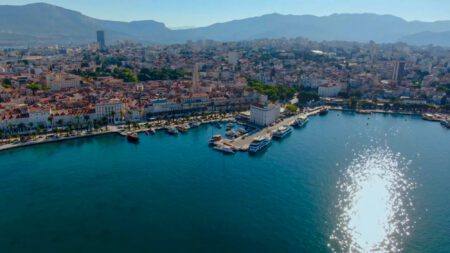This is the moment a diving team enters a huge unexplored cave in a mountain which could become a major source of freshwater.
The cave, called Izvorot na Babuna (The Spring of Babuna), located at an altitude of about 1,400 metres above sea level in the heart of Mount Solunska Glava in the North Macedonian village of Studenicani in the Balkan Peninsula was first discovered in 1968, but only explored now.
Three underwater lakes had previously been identified but not properly examined by researchers, and for the most part the secrets of the deepwater caves have remained a mystery until now.
The Macedonian expedition was comprised of six members and only two divers explored the lakes during the six-hour expedition.
One of the divers, Darko Nedanoski, 27, president of the Speleological Federation of Macedonia, said the diving conditions were extreme as the water was only 5 degrees Celsius and it was -10 degrees outside.
According to Nedanoski, it was a successful operation as he and dive partner Goce Dimitrievski managed to reach the first two lakes and gathered enough insight to be able to prepare for an even bigger expedition next year when they plan to go even deeper into the unexplored canals.
Nedanoski said the goal was to obtain water samples from inside the deepest parts of the cave, which is then going to be tested and analysed.
He added: “It is certainly a very big reservoir for our country.”

Nedanoski told Newsflash he has been involved in speleology for over 15 years now, and has yet to embark on his biggest quest.
He said: “My biggest dream is to go into one of the deepest caves in the world, the Krubera Cave located in the Arabika Massif in Georgia, and descend to -2000 metres.”
Nedanoski added: “The federation’s main goal is to explore but also protect the caves.
“We insist on educating members on techniques that are useful in preserving these natural locations, obtaining the necessary equipment for the activities, and exploring and documenting every new discovery we make through the years.”


